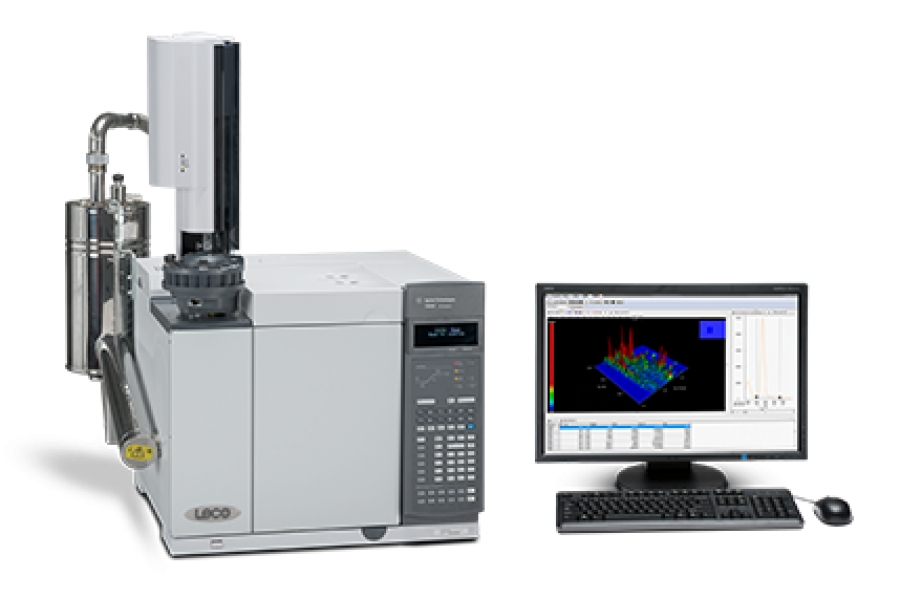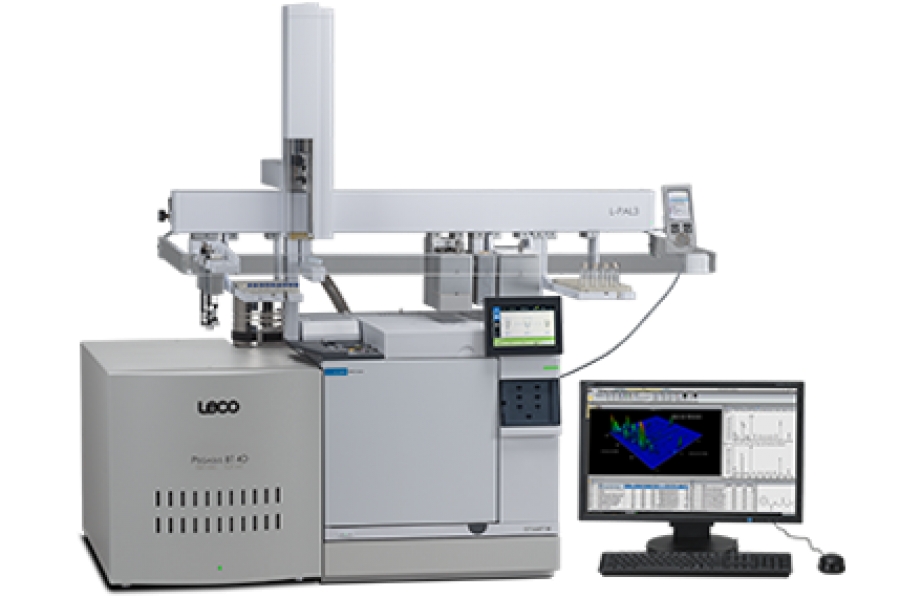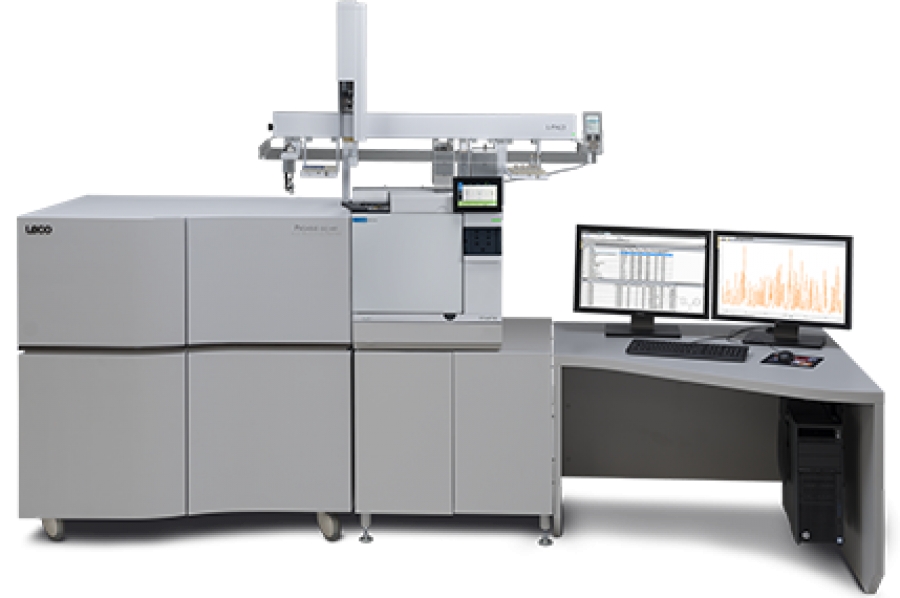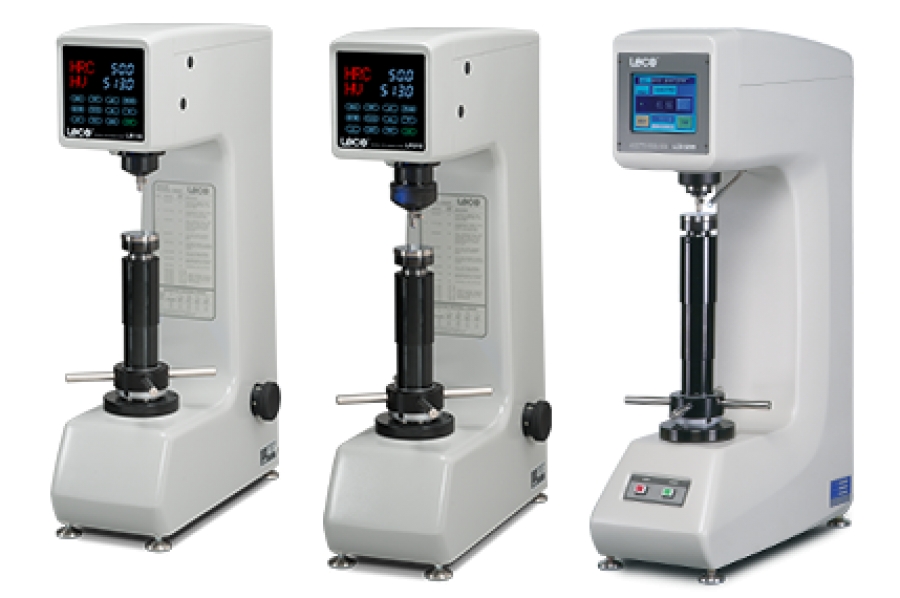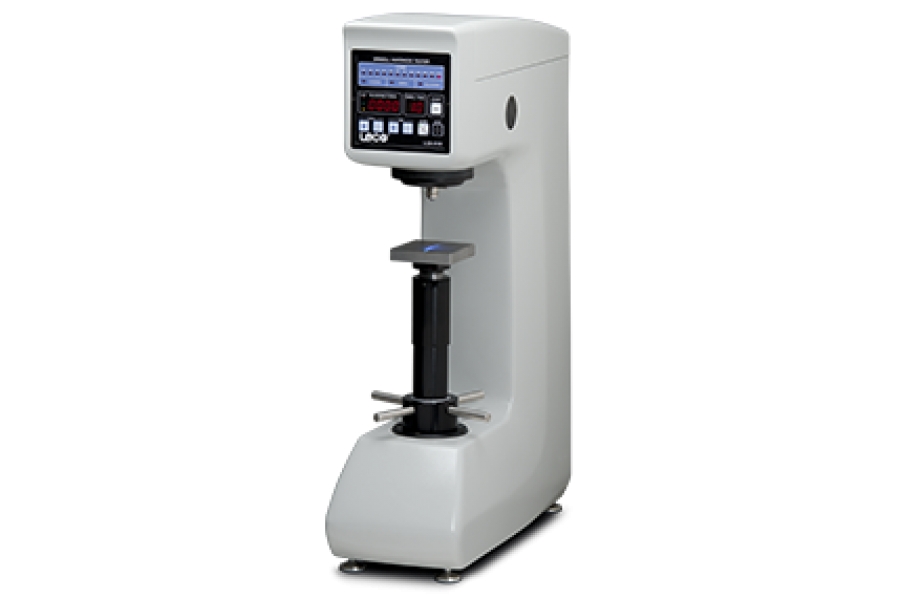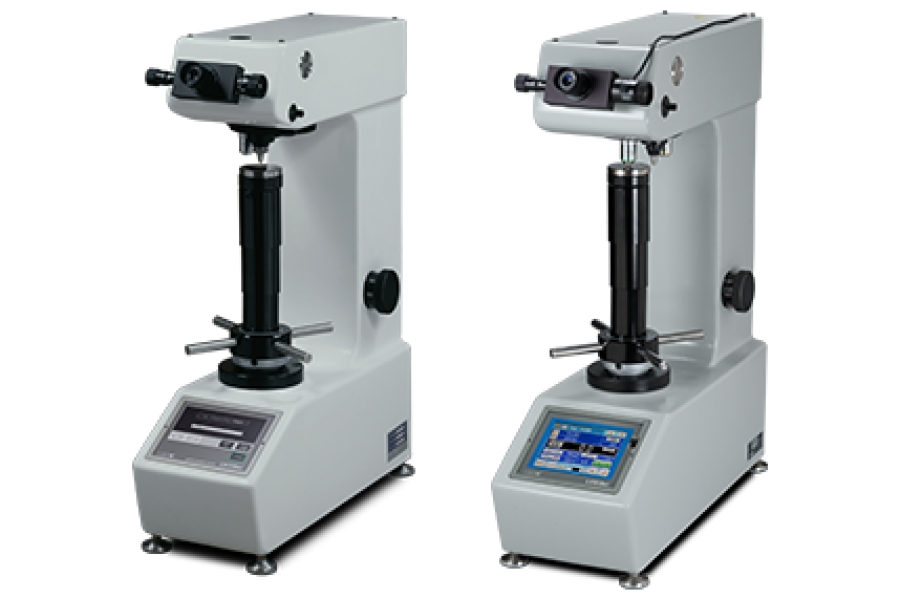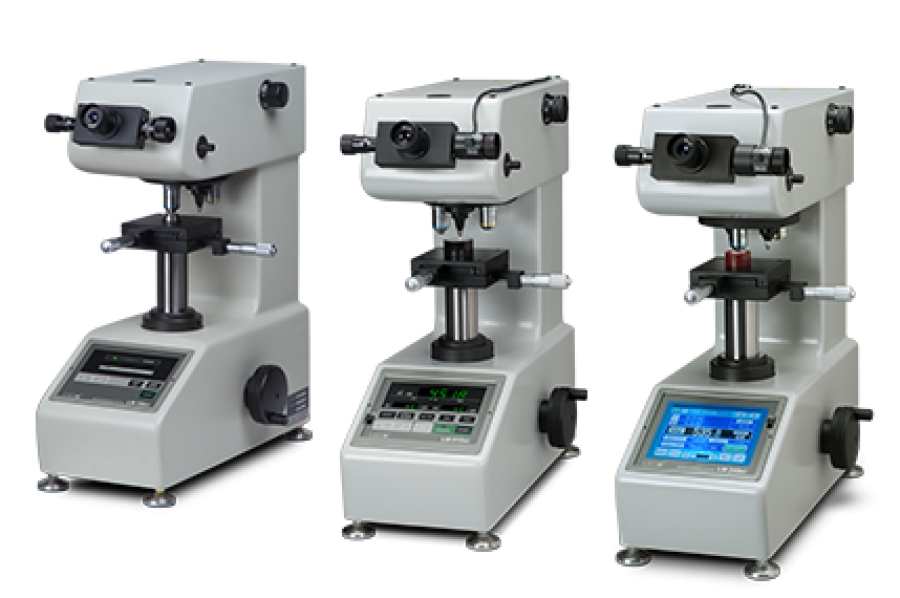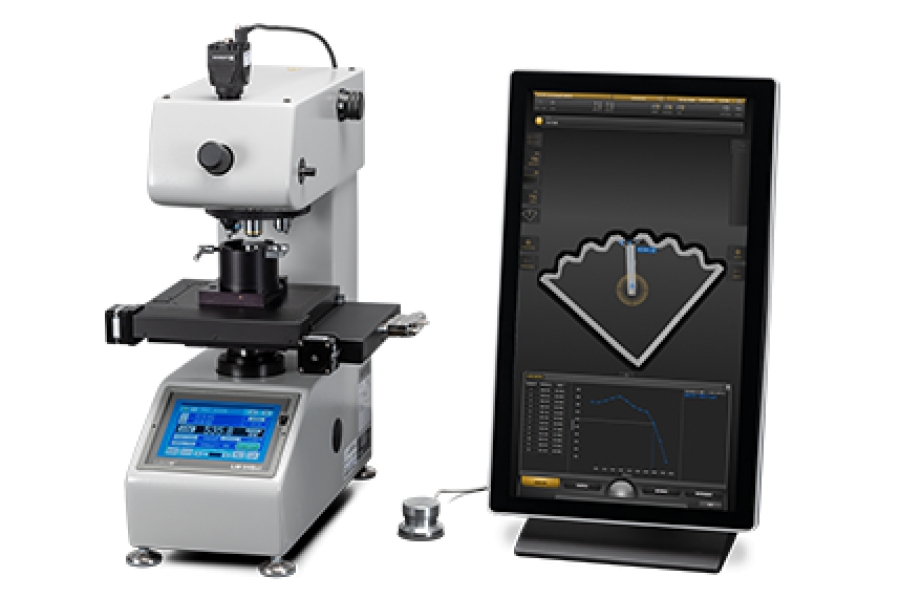
 LECO
Empowering Results
LECO
Empowering Results
GC×GC-ECD/FID
Comprehensive Two-Dimensional Gas Chromatography
LECO GC×GC combined with Electron Capture or Flame Ionization Detectors offer you the resolving power of a GC×GC system combined with our advanced ChromaTOF® software for an increase in efficiency and productivity for samples that are too complex for a single-channel detector system. Ideal for everyday quality control and production needs, these GC×GC systems provide you with all the tools necessary to achieve exceptional results in a cost-effective package.
Features
- Enhanced separating power for complex sample analysis
- Easy-to-use ChromaTOF®-based software provides acquisition processing and reporting funtionality within a single package
- Classification software feature simplifies component identification
- Flame Ionization Detector (FID) and Electron Capture Detector (ECD) models available
- Available Cryogen-free modulator eliminates the need for LN2 dewars
In GC analysis, chemical compounds are separated by their interaction with the stationary phase in a GC column. Sometimes, however, the separation is not sufficient to provide identification and/or quantification of all compounds. In many situations involving simple sample analysis, the inability to separate two compounds on a GC column with one stationary phase may be resolved by the use of a different column with a different stationary phase. However, as samples become more complex, the simple substitution of one chromatographic stationary phase for another may result in improvements in separation between some compounds with loss of separation between others. In this situation, the combined separation provided by each of two stationary phases is required. As opposed to limited techniques such as heart-cutting, comprehensive two-dimensional gas chromatography (GC×GC) provides superior chromatographic resolution across the entire sample.
In comprehensive two-dimensional gas chromatography (GC×GC) all of the analyte passes from the first column through the second. Compounds eluting from the first chromatographic column are trapped, and then systematically injected into the second column to obtain the second separation. In order to retain the chromatographic resolution obtained from the first separation, the second orthogonal separation must take place quickly. As such, it is important that compounds be introduced into this column quickly and in a narrow chromatographic band. In the LECO GCxGC system, this is accomplished by cryogenic dual-stage modulation. With cryogenic modulation, compounds eluting from the first chromatographic column are trapped in a narrow zone in the column as it passes through the modulator. When this zone is rapidly heated, the trapped compounds pass into the second chromatographic column as a narrow band, allowing for the highest possible resolution in the second separation.
LECO now offers . In order to properly trap and modulate analytes more volatile than n-octane (C8 n-alkane) the lowest achievable modulation temperatures are required. Reaching these low temperatures requires the use of a cryogen such as Liquid Nitrogen (LN2). LECO's LN2 modulator delivers the ability to modulate these volatile analytes. However, the use and management of LN2 dewars in a laboratory can be a hindrance to productivity. The Consumable-Free modulator is, therefore, an excellent choice for laboratories hesitant to take on the management of LN2 dewars and who do not require modulation of volatile analytes.
GC×GC-ECD/FID Details

- Models
-
GCxGC with LN2 Cooled Thermal Modulator
-
GC×GC with Consumable-Free Modulator
-
- Options
-
Liquid Nitrogen, automated fill
-
Optional inlets available (including S/SL, PTV, and MMI)
- Optional detectorsavailable (including FID and ECD)
-
- Featured application
Quantification of Dioxin-Like Polychlorinated Biphenyls - Product literature
GC×GC
PEGASUS® GC-HRT+ 4D
High Resolution GC×GC-TOFMS
The Pegasus GC-HRT+ 4D combines the highest performance GC×GC and TOFMS tools on the market with High Resolution Deconvolution® (HRD®). Ideal for the most complex samples, users are able to find more analytes than ever before and confidently identify unknown components. ChromaTOF® brand software, designed specifically for HRT+ instrumentation and GC×GC support, adds advanced qualitative and quantitative capabilities to an all-in-one user-friendly data system.
Features
- Clearly identify analytes in your sample with the unmatched sensitivity of the GC×GC modulation process.
- Mass accuracies of 1 ppm and peak capacity potential at least two times greater than any mass spectrometer currently available on the marketplace.
- Encoded Frequent Pushing® (EFP®) contributes to a significant increase in sensitivity, expanded dynamic range, wide mass range, and much more.
- Folded Flight Path® (FFP®) technology provides high resolution, enhanced sensitivity, and higher orders of TOF focusing.
- KADAS®, our patented ion statistics-based data acquisition system, dramatically reduces noise, ensures mass accuracy, and reduces file size.
- Integrated NIST and Accurate Mass Libraries compare accurate mass new sample data against an accurate mass library data set.
- Multi-Mode Source™ (MMS™) combining EI, PCI, and NCI all in one high-performing, easy-to-tune source
The Pegasus GC-HRT+ 4D provides the capability to obtain high-resolution mass spectral data using comprehensive two-dimensional gas chromatography (GC×GC). GC×GC provides high peak capacity by trapping compounds eluting from the first chromatographic column and then systematically injecting them into the second column to obtain the second separation. The separation on the second chromatographic phase is completed in seconds, resulting in very narrow chromatographic peaks (<200 milliseconds).
To obtain sufficient data to define a 2D chromatographic peak, acquisition rates of at least 100 spectra/second are required. With the Pegasus GC-HRT+ 4D, data acquisition rates of up to 200 spectra/second can be utilized, giving sufficient data density to obtain spectral deconvolution of the chromatographic peaks. Combined, LECO's GC×GC chromatography and the Pegasus GC-HRT+ provide the ultimate solution in complex sample characterization.
Pegasus GC-HRT+ 4D Details
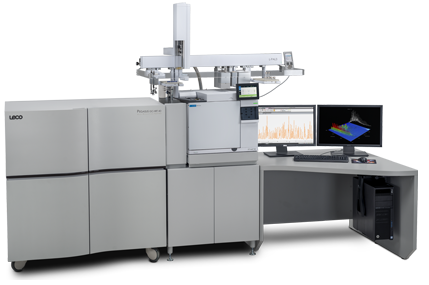
- Models
-
Pegasus GC-HRT+ 4D with Liquid Nitrogen Thermal Modulator
-
Pegasus GC-HRT+ 4D with Cryogen-Free Modulator
-
- Options
- Featured application
Discovery of Environmental Pollutants at an Electronic Waste Recycling Facility - Product literature
Pegasus GC-HRT+ 4D

PEGASUS® BT 4D
GC×GC Time-of-Flight Mass Spectrometer
The Pegasus BT 4D offers enhanced sensitivity by coupling our benchtop Pegasus BT with a high performance GC×GC modulation system. This combination gives the Pegasus BT 4D the ability to interrogate challenging samples where the best sensitivity is needed. Unique and powerful software and hardware features simplify quantitation, while also dramatically making GC×GC easy-to-use and understand.
Our traditional thermal modulation system provides the highest sensitivity available on the market for those analyzing the most complex samples.
Our new FLUX™ flow modulation system is an excellent option for those looking for added capability over one dimensional GC.
- ChromaTOF®, LECO's exclusive software designed for advance chromatography, works seamlessly with the new Pegasus BT 4D to automatically process user data and remove the guesswork involved with analyte identification and quantification. Features such as NonTarget Deconvolution®, Target Analyte Find, library searches, and an easy-to-configure interface, all come together to give users a better GC×GC experience.
- Do you know what's missing in your sample? The Pegasus BT 4D makes is easy to perform a Non-Targeted analysis for complex samples.
- Clearly identify analytes in your sample with the unmatched sensitivity of the GCxGC modulation process.
- Our open-style StayClean® EI source virtually eliminates downtime associated with source cleaning, which means more time running samples and less time cleaning your source
Comprehensive two-dimensional gas chromatography (GC×GC) is a technique that has been around for over 25 years. Some may argue that the technique has been over-hyped, and that it is a complicated research tool that doesn't fit into routine analytical laboratories. However, several routine validated GC×GC methods have demonstrated that the technique is accurate, precise, and robust. Research has shown the benefits of GC×GC in a wide variety of applications (e.g. environmental, metabolomics, petroleum, food safety, fragrance). The benefits include increased peak capacity (i.e. resolution), structured two-dimensional chromatograms (i.e. contour plots), and sensitivity enhancement. The merits of GC×GC as a separation science are clear, but how will it benefit a routine laboratory? Multiple analyte classes can be combined into a single analysis to save instrument and sample preparation time. Manual review time for non-target screening methods can be reduced with the increased peak resolution of a GC×GC analysis by creating a better library match leading to faster, more confident peak identification. Sample characterization is improved with a GC×GC analysis which increases confidence in decisions based on analytical results. The extra resolution afforded by the GC×GC analysis allows the use of more economical detectors, like the flame ionization detector (FID) or electron capture detector (ECD).
Download this free whitepaper: Benefits of Comprehensive Two-Dimensional Gas Chromatography (GC×GC) for a Routine Laboratory, authored by Michelle Misselwitz, for more information on how GC×GC can benefit your laboratory.
Pegasus BT 4D Details
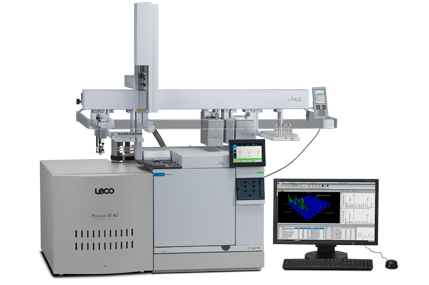
- Models
-
Pegasus BT 4D with FLUX Flow Modulator
-
Pegasus BT 4D with Liquid Nitrogen Thermal Modulator
-
Pegasus BT 4D with Cryogen-Free Thermal Modulator
-
- Options
- Featured application
Determining Terpene Profiles of Cannabis Strains - Product literature
Pegasus BT 4D
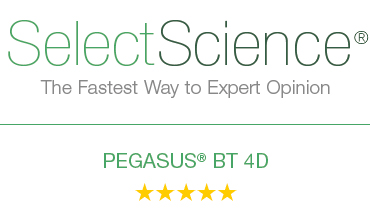
PEGASUS® GC-HRT+
High Resolution GC-TOFMS
Now with even more sensitivity than ever before, the Pegasus GC-HRT+ is the perfect tool for meeting the challenges of today’s highly complex analytical demands. This high performance mass spectrometer features industry leading mass accuracy, full mass range acquisition with exceptional speed, isotopic abundance, and mass resolution, all available within 1 injection.
Folded Flight Path® (FFP®) technology and a novel data acquisition system enable resolution of 50,000 FWHM, mass accuracies less than 1 ppm, and acquisition rates up to 200 spectra/second—all with the goal to facilitate rich analyte finding and high-confidence analyte identification.
Features
- Mass accuracies of 1 ppm and peak capacity potential at least two times greater than any mass spectrometer currently available on the marketplace
- Encoded Frequent Pushing® (EFP®) contributes to a significant increase in sensitivity, expanded dynamic range, wide mass range, and much more.
- Folded Flight Path (FFP) technology provides high resolution, enhanced sensitivity, and higher orders of TOF focusing
- KADAS®, our patented ion statistics-based data acquisition system, dramatically reduces noise, ensures mass accuracy, and reduces file size.
- What else is in your sample? In cases where ambiguity exists, Ultra High Resolution mode combined with HRD will pull apart highly isobaric ions (mass differences ~ 0.02 amu).
- Multi-Mode Source™ (MMS™) combines EI, Positive Chemical Ionization CI, and Electron Capture Negative Ionization (ECNI)
Pegasus GC-HRT+ Details
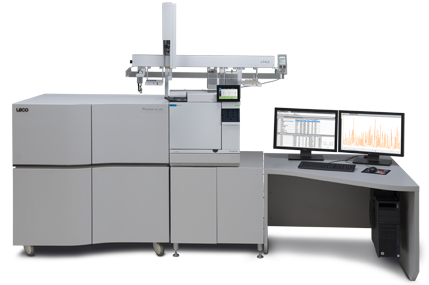
- Models
-
Pegasus GC-HRT+
-
- Options
- Featured application
Quantitative Analysis of GHB in Hair - Product literature
Pegasus GC-HRT+

PEGASUS® BT GC-TOFMS
GC Time-of-Flight Mass Spectrometer
Today's laboratories are being asked for more everyday—more samples run, more data acquired, more chemical information processed, and more results achieved—all in less time, for less money. The Pegasus BT allows you to achieve all of the data you need from a single sample run, while powerful yet user-friendly ChromaTOF® software processes your data and removes the guesswork involved with analyte identification, quantitation, and reporting. The Pegasus BT give users more uptime, improved chemical data, and an increase in overall productivity and efficiency.
- A sleek, benchtop design saves valuable space in the laboratory.
- Industry-leading sensitivity helps you find and quantify an unlimited number of analytes, while working with proprietary deconvolution algorithms to yield clean, high-quality spectra.
- Complete historical record of mass spectral components for each sample is retained for future data mining.
- The tried-and-tested reliability and durability of our Pegasus brand in a convenient benchtop unit.
Mass spectrometers are perhaps the greatest tool available for the analytical chemist. With the ability to ionize, sort, and measure complex chemical mixtures by their mass-to-charge ratio (m/z) with femtogram (fg) to nanogram (ng) sensitivity, it is no wonder that mass spectrometers are widely used across many industries. The mass spectrometer can be divided into three main components: ionization source, mass analyzer, and detector. While the functions of the ionization source and detector are extremely important to the function of the mass spectrometer, it is the selection of the mass analyzer that can be tailored to meet data quality objectives. Sample matrix, required detection levels, target or non-target analysis, and budget all play an important role when selecting a mass analyzer. There are typically four types of mass analyzers to choose from: time-of-flight, quadrupole, ion trap and magnetic sector.
A time-of-flight mass spectrometer (TOFMS) is ideal for discovering new compounds in your sample, quantifying targeted compounds in complex samples, and increasing throughput with fast chromatography.
To read more, download the free whitepaper Benefits of Equipping your Lab with a Time-of-Flight Mass Spectrometer, authored by Michelle Misselwitz.
Pegasus BT Details
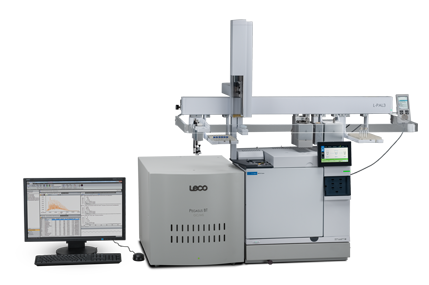
- Models
-
Pegasus BT
-
- Options
- Featured application
StayClean Ion Source Stability - Product literature
Pegasus BT

LR / LCR Series
Rockwell-Type Hardness Testing System
Our LR Series Rockwell-type hardness tester is built to handle your high-volume workloads while maintaining accuracy and repeatability, providing ease-of-mind. A variety of models—including analog, digital, and twin testers—are designed to suit your specific needs and applications.
- User-friendly operation panel
- Convenient OK/NG indicators
- Automatic measuring mode
- Hardness conversion scales conveniently displayed on operation panel
- Free loads and light-load Brinell available on LCR500
LR/LCR Series Details
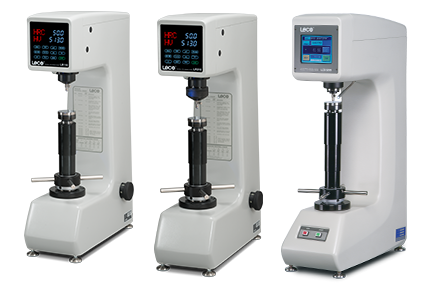
- Models
-
LR110 Series, economical choice for Rockwell-only or Superficial-only testing
-
LR310 Series, economical choice for Rockwell and Superficial testing
-
LCR500, fully automatic load cell Rockwell-type
-
- Product literature
Hardness Testing - Consumables
LCB3100 Brinell Load Cell
Hardness Tester
Using state-of-the-art load cell technology, the LCB3100 is a Brinell hardness tester that is versatile and easy-to-use. The operation is handled through a user-friendly touch-pad, virtually eliminating errors by removing the use of knobs and the stacking of weights that is typically associated with most testers. You simply choose the load on the operation panel and let the tester do the rest for streamlined analysis.
- Twelve selectable load options to choose from
- Heavy-duty cast housing with an enclosed load cell
- Direct load method with load-cell feedback
- Auto-apply, -hold, and -removal of loads
- Selectable dwell times
- A user-friendly, touch-pad operation panel
LCB3100 Details

- Models
-
LCB3100 Brinell Load Cell Hardness Tester
-
- Options
- Product literature
LCB3100 - Consumables
LV Series
Macro-Vickers Hardness Testing System
Our LV Series Macro Vickers hardness testing systems offer an affordable testing system suitable for the larger, heavier samples that are used in welding and other demanding applications. Models include analog and digital, with options to upgrade to automatic configurations based on your needs.
- Turret accommodates up to three objectives
- Finer-pitched focus than previous models
- Eight steps of the wide-load range starting at 0.3 kgf and going up to 50 kgf
- A variety of objectives, from 2.5X to 100X
- Light-load Brinell testing available on the LV810 (custom load set required)
LV Series Details
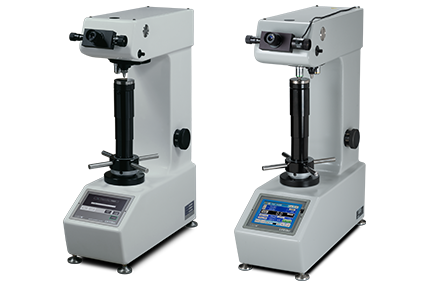
- Models
-
LV110 Series, economical solution for low volume labs, combination of micro/macro loads available
-
LV810 Series, light load Brinell testing, combination of micro/macro loads available
-
- Options
- Product literature
Hardness Testing - Consumables
LM Series
Microindentation Hardness Testing Systems
Ideal for a production facility or a research lab, our LM Series of Microindentation Hardness Testing Systems offers a variety of models (including analog and digital) with advanced features that can be tailored to meet your unique requirements and budget.
- Load ranges from 1 gf to 2000 gf
- Manual or auto turret
- A variety of objectives, from 2.5X to 100X
- Up to four objectives and two indenters on one turret
- Smaller footprint saves space in your laboratory
Applications
Valuable for a variety of applications, including nitrate coating, determining hardness in layers, testing on thin specimens, and welding, to name a few.
LM Series Details
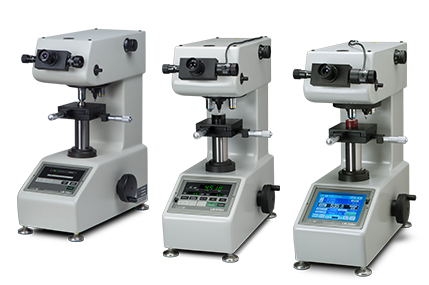
- Models
-
LM110 Series, economical solution for low volume labs
-
LM310 Series, equipped with digital measurement and hardness calculations
-
LM810 Series, equipped with digital measurement, hardness calculations, conversions, and statistical hardness information
- LM248AT Dual Indenter, equipped with digital measurement, hardness calculations, conversions, and statistical hardness information
-
- Options
- Product literature
Hardness Testing - Consumables
AMH55
Automated Hardness Testing System
Maximize your productivity and easily measure impressions on various surface conditions for a wide number of applications with LECO’s new AMH55. The AMH55 introduces LECO’s innovative Cornerstone® brand software to our hardness testing platforms, for increased usability, simplified reporting, and streamlined analysis times. Supporting accurate and efficient microindentation and Macro/Vickers hardness testing in fully automatic, semi-automatic, and lite configurations, the AMH55 is a valuable resource for users needing precise and productive hardness testing while tailoring the data and results to their needs.
- Advanced image-recognition technology allows analysis of information not available with limited threshold-based methods
- Measures impressions with various surface conditions, including scratched/etched/unevenly illuminated surfaces
- Cornerstone® brand software with available touch-screen interface gives the user complete control over analysis parameters, method settings, calibrations, reporting, and more so testing can be tailored to a specific application
- Choose the model configuration that best fits your needs:
- AMH55 Automatic
- Simultaneous automatic alignment and automatic parfocal tools, as well as automatic pixel calibration and shading correction
- Optional Advanced Analysis Module for color contoured mapping
- Customizable data reporting
- Motorized X, Y, and Z axis movement
- AMH55 Semi-Automatic
- Automatically locates and analyzes indents, automatic alignment, and pixel calibration
- Customizable data reporting
- Motorized X and Y axis
- Manual focus
- AMH55 Lite
- Automatically locates and analyzes indents within a field of view
- Automatic pixel calibration
- Customizable data reporting
- Manual X, Y, and Z axis with optional digital stage micrometers to track stage movement
- Upgradeable to AMH55 Automatic or Semi-Automatic
- AMH55 Automatic
AMH55 Details
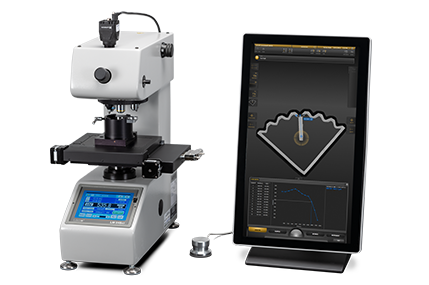
- Models
-
AMH55 with LM110 Series Microindentation
-
AMH55 with LM248 Series Microindentation
-
AMH55 with LV110/810 Series Macro Vickers
-
- Options
- Featured application
Hardness Profile Determination in Decarburized Steel - Product literature
- AMH55 Series
- AMH55 Lite - Consumables
